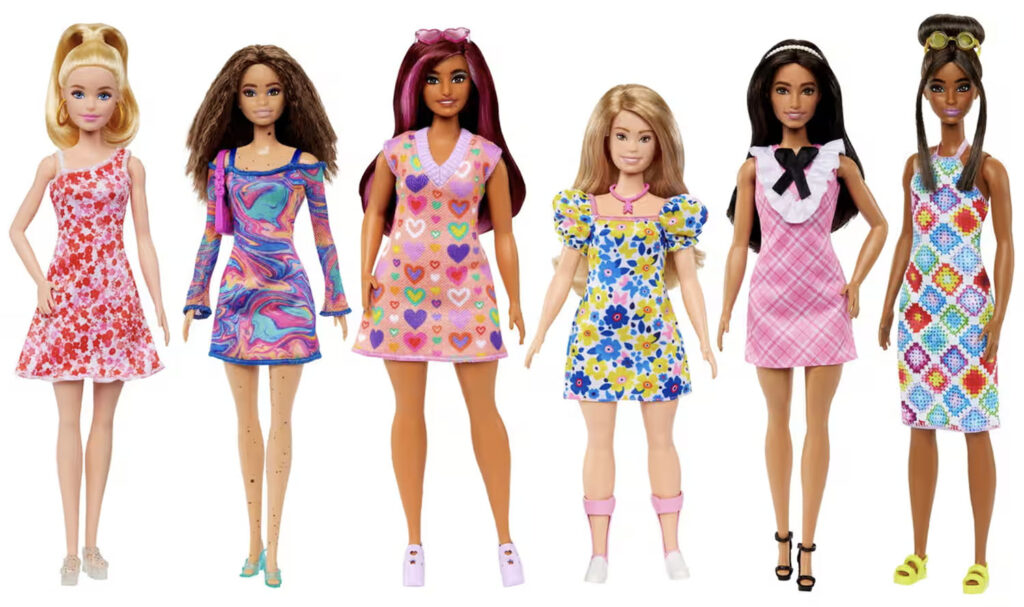
By Alexandra Greer, Alliance Intern from Fordham University ‘25
The movie Barbie has touched many Americans and begun a long-needed conversation about gender roles. This is furthered by Mattel’s release of Down Syndrome Barbie, along with a powerful inclusivity campaign for diversity and disability rights. They received a Shorty Award in Gender Equality for their heart-touching video. You can see the delight in the faces of children with Down Syndrome. One mother said, “It can bring tears to my eyes just to see that Barbie has Down Syndrome. It’s a representation of my daughter.”
Mattel worked in close partnership with the National Down Syndrome Society to create the new Barbie so more children can “find a doll that represents them.” Mattel’s goal was to have “Barbie to be reflective of the world children see around them.” Through Barbie the company is saying, “We see you, we see your value and we honor you as part of our community.” Mattel’s Fashionistas series shows that the company is moving into a new age of representation honoring the disability community.
The Importance of Toys Affecting Identity and the Role of Companies
Kids want to feel seen in the toys they play with, whether in their interests or identity. Now children with Down Syndrome have that chance with Barbie. Companies play a overtly powerful role in changing the fabric of our culture, and Mattel is taking the responsibility to enact positive change. We hope all businesses will use their influence to bring about changes for equity, health, kindness and sustainability for all.
For decades Barbie has been an iconic toy that set problematic beauty standards for girls and boys. She emulated a singular identity – skinny, blonde, white female. These exceedingly unrealistic standards created self-image problems for generations trying to achieve that perfect Barbie look. In response to years of critique by psychologists and feminists, Mattel began to shift Barbie’s image as she took on different colors, shapes and sizes. She became more than a doll.
Barbie is now helping us see the importance of our inherent value of personhood, rather than just a sole focus on outward appearance. Barbie is now celebrating the beauty and inherent value in diversity.
Shifting Portrayals of Down Syndrome and Other Disabilities
For people with Down Syndrome and other disabilities, physical and mental, media portrayals have often been misleading, one-sided or totally absent. The experiences of those with disabilities are reduced to their incapabilities. But that is changing, as more disabled people are taking charge of the narrative and speaking out on how they want to be represented.
One young person with Down Syndrome in the video expressed her gratitude for the new Barbie “being able to capture what Down Syndrome is,” and, “that having Down Syndrome doesn’t hold us back. We want to show our abilities, not our disabilities.”
Mattel has been listening to these communities in how they think the Barbie with Down Syndrome should look. The doll has distinctive features that are characteristic of Down syndrome, down to the curved pinkie, known as clinodactyly. This was done without the exaggerations and stereotyping that many media portrayals employed in the past.
One mother emphasized the significance of Down Syndrome Barbie for her daughter and the movement: “She’s more than a doll…It’s a special time in our culture.” A father added how this Barbie allows all kids to open “their hearts and their minds to those differences” through their toys.
The Surprisingly Positive Role Today’s Barbie Can Play in Transforming Our Society
Since the Barbie movie came out in 2023, global love for the Barbie franchise has been reignited. The movie reminded audiences of the true purpose of the toy — to inspire kids to embark on their life journeys by tapping into their inner strength and resilience to overcome obstacles. It presented the notion that we are capable of achieving anything we put our minds to in a modern way. We don’t have to fit into a certain category to have purpose, just being ourselves is more than enough.
With the release of the new doll, Barbie is officially stating that people with disabilities have a much deserved place in this narrative after years of being left out. This representation uplifts disabled people, and is a great advancement in dismantling stigmas.
